
When the first Clifton’s Cafeteria opened in 1931, you could get a meal even if you had no money to pay for it, and when you were done, you could head to “The Garden” and meditate with these in-house spirit guides.
A Project of The Library Foundation of Los Angeles Based on the Menu Collection of the Los Angeles Public Library

When the first Clifton’s Cafeteria opened in 1931, you could get a meal even if you had no money to pay for it, and when you were done, you could head to “The Garden” and meditate with these in-house spirit guides.


A 1954 visit to the Ambassador Hotel meant you could stay in your room and watch The Jimmy Durante Show while you ate beluga caviar, breast of capon with glazed pineapple in a madeira sauce, and broiled calf’s liver sauteed with crisp bacon.
“At half-past five Ciro's looks like a woman sitting before her dressing table just beginning to make up for the evening. The waiters are setting up the tables for the dinner trade,the cigarette and hat-check girls are changing from slacks to the abbreviated can-can costumes which are their work clothes, and an undiscovered Rosemary Clooney making her debut tonight is rehearsing. Don't let the stars get in your eyes…”
Budd Schulberg, “A Table at Ciro’s”
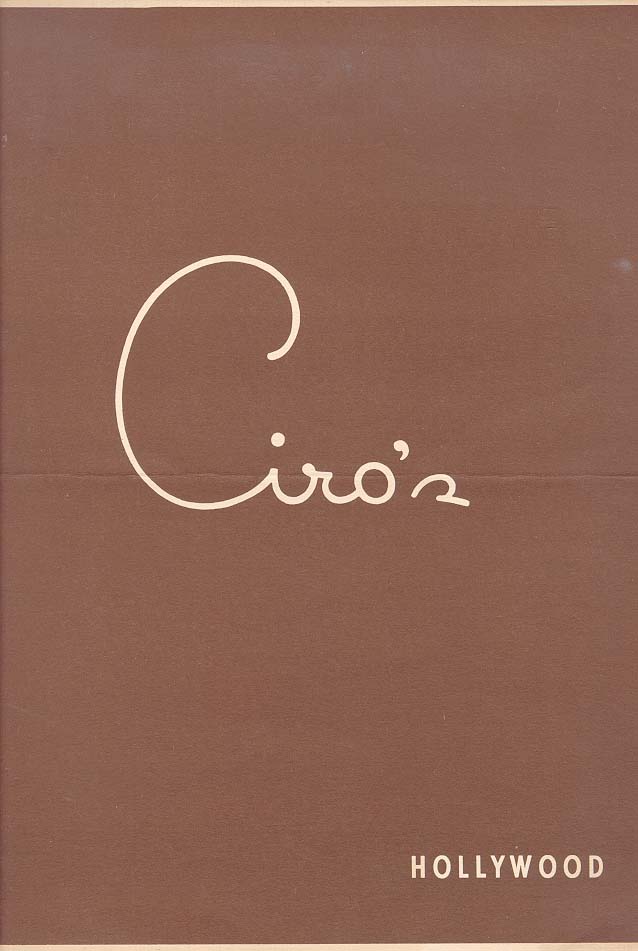
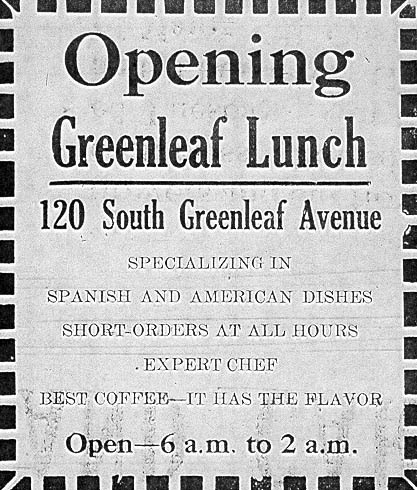
In honor of the latest chef to jump aboard this project and remix a historic L.A. menu– Ricardo Diaz of Guisados, Cook’s Tortas, Colonia Taco, and Whittier’s Bizarra Capital– here’s a 1920s ad for an o.g. Whittier lunch room. It has the flavor.
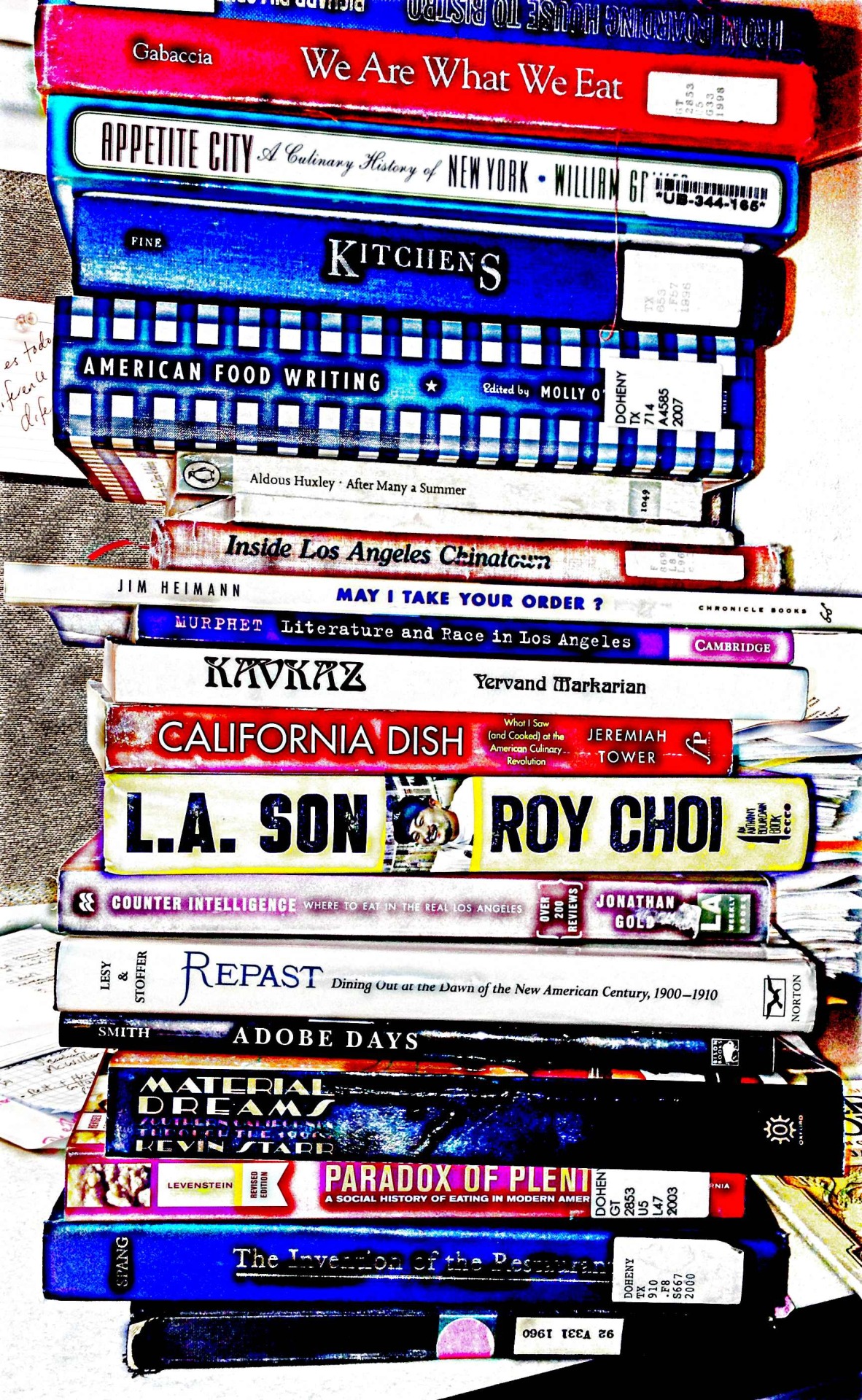
Much of the work behind this project has involved compiling a body of research and history that has never been compiled before. As much as Angelenos love their restaurants, we’ve done a pretty terrible job historicizing them, So for the past year, with the great help of my undergraduate and graduate students at USC, I’ve been trying to mend that gap: searching archives of the Los Angeles Times, the Los Angeles Star, the Los Angeles Herald, the California Eagle, La Opinion, & many other local papers; restaurant memoirs; national restaurant histories; Los Angeles histories; menu design histories; Food sociology and anthropology scholarship; Gourmet, Sunset, and American Cookery back issues; Negro Green Book archives; novels, songs, poems, films, anywhere a restaurant, a menu, or a plate of food shows up in the general vicinity of Los Angeles. In the coming months, I will post an extensive bibliography here, which I hope will be of help to future researchers.
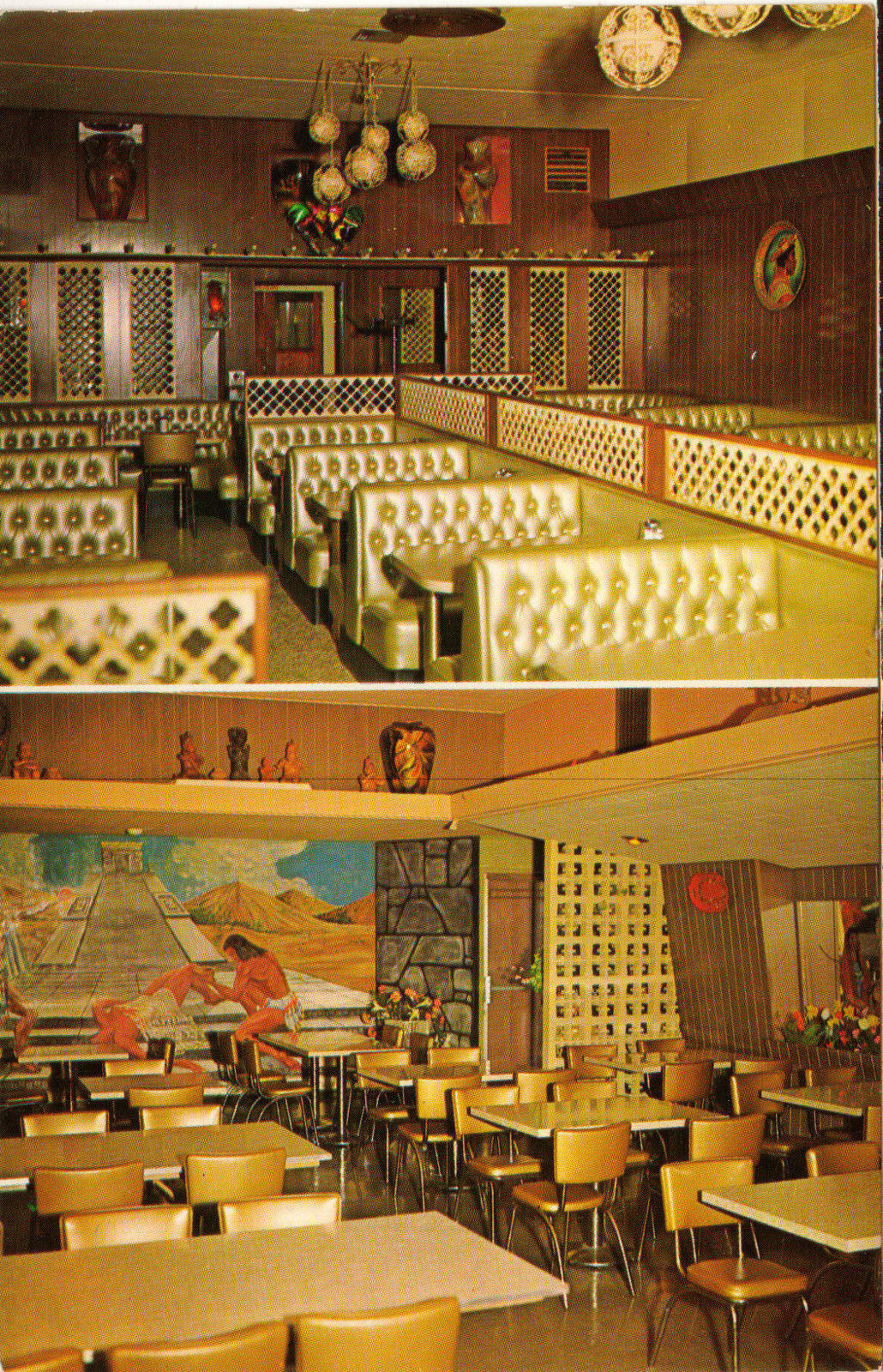
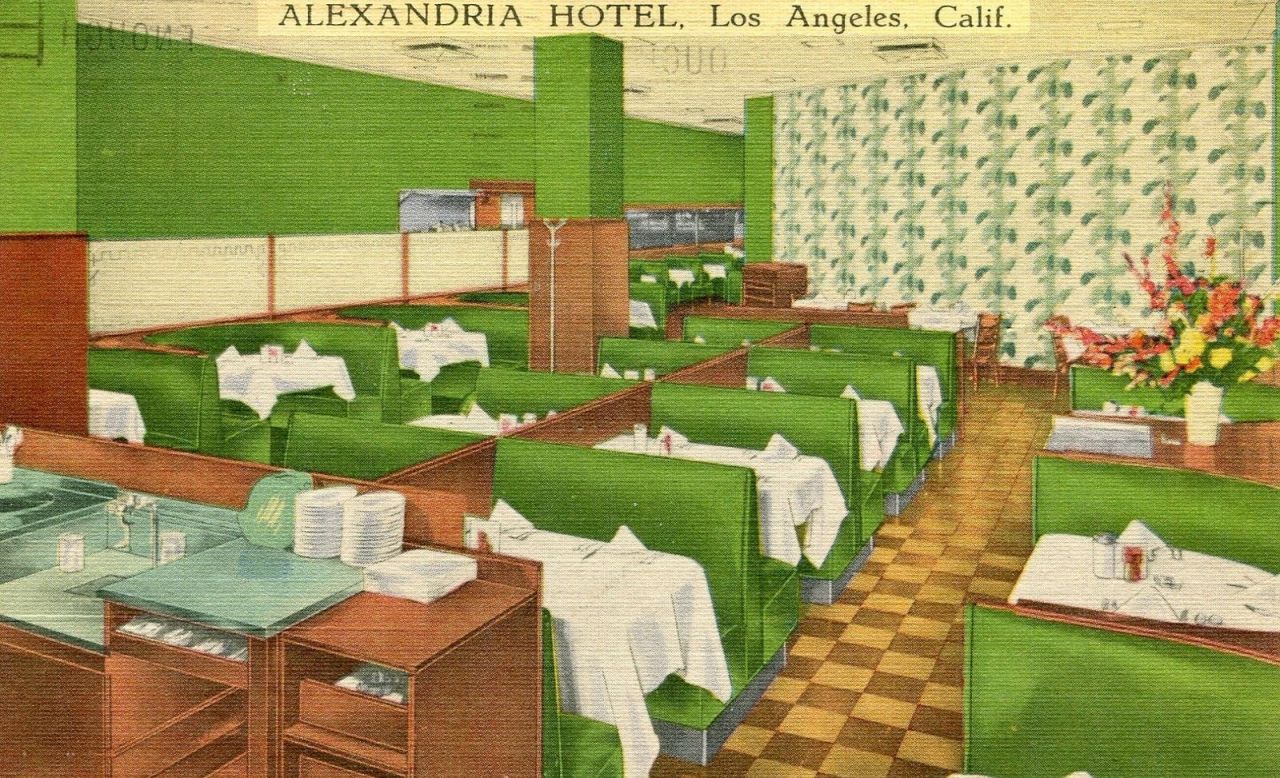

For most of the past century, it seemed that the best way to promote a restaurant was to picture it empty. Here’s empty versions of the Alexandria, the Far East Terrace, and on top, the Nayarit. Its sign still lives atop The Echo on Sunset.
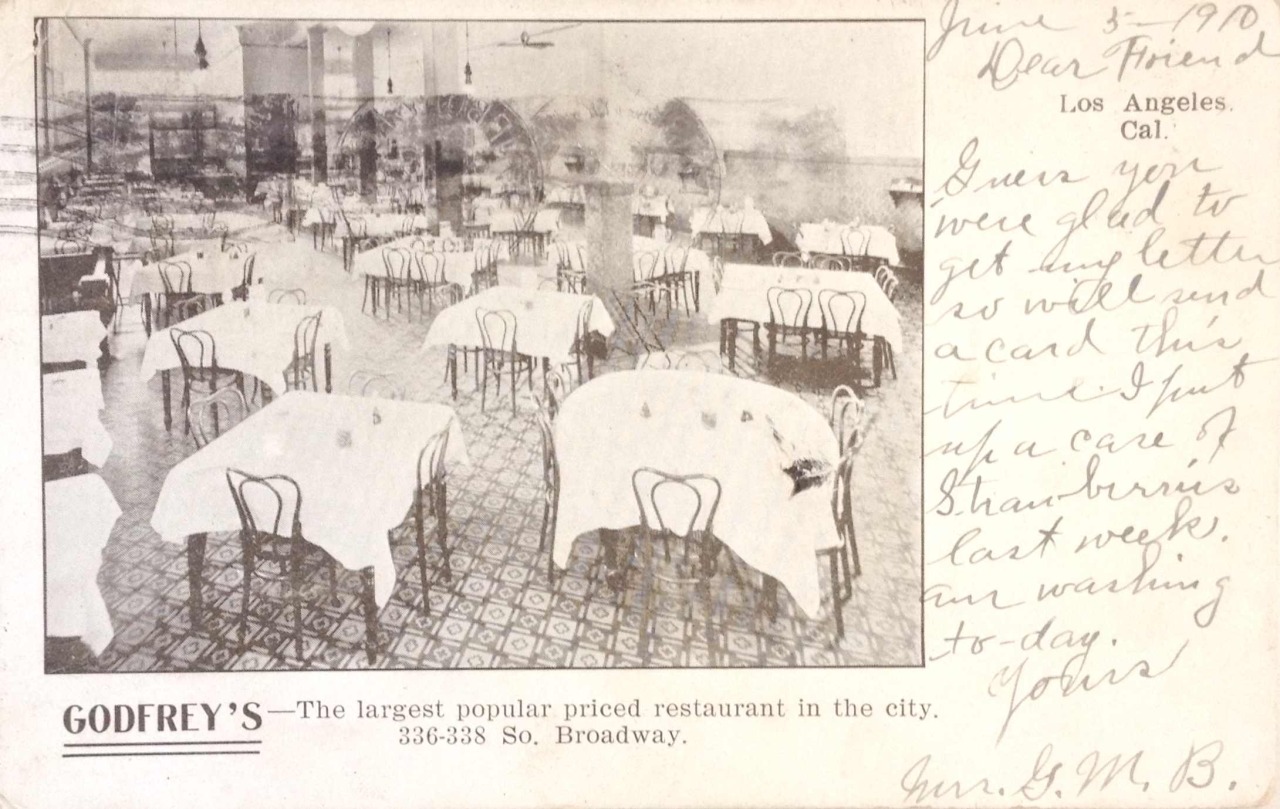
June 3, 1910. “Dear Friend, Guess you were glad to get my letter, so will send a card this time. I put up a case of strawberries last week. Am washing to-day. Yours, Mrs. G.M.B.” A restaurant souvenir postcard at work: sent from Fairbury, Nebraska to Herington, Kansas.
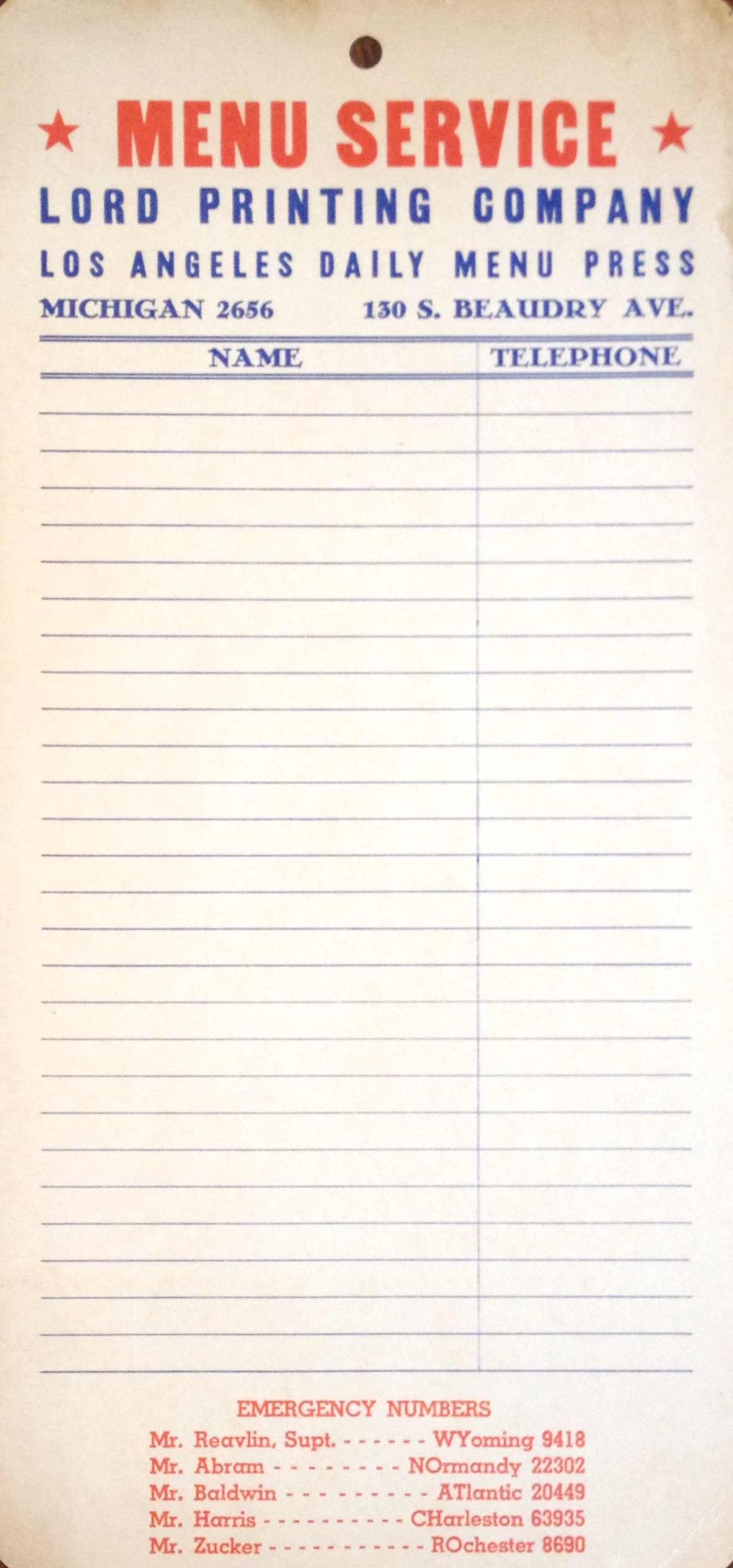
Once the largest menu printing company in the country, The Lord Menu Company operated from 1909 through the 1970s in downtown Los Angeles, where its warehouse full of letterpresses and linotype machines supplied restaurants as a “daily menu press” throughout the city with over 500 menus a day (as well as to restaurants in San Diego, Phoenix, Lake Tahoe, and Las Vegas). It was Lord that first put full color photographs into the visual menu lexicon, an art they mastered with their menus for the Bob’s Big Boy chain, which next to their hat designs for the Brown Derby menus and regal portraiture of Romanoff’s, were probably their most famous. The Los Angeles Public Library recently received a donation of rare menus and printing materials from Paul Abram, son of Lord’s longtime lithographer and manufacturing manager Albert Abram. We are thrilled to include them, and their stories, in the forthcoming book and exhibition.

In the pioneering days of L.A. automobile culture, Angelenos didn’t just drive in their cars to eat out at restaurants, they drove to restaurants to eat in their cars. Add radio to the mix and you had the ultimate L.A. trifecta: cars, food, and music. Popular radio DJs frequently broadcast live from drive-ins. Think Art Laboe on the mic at Scrivener’s, or Larry Finley (who would later own his own supper club above the Mocambo on the Strip) coming to you live nightly from Bob’s.